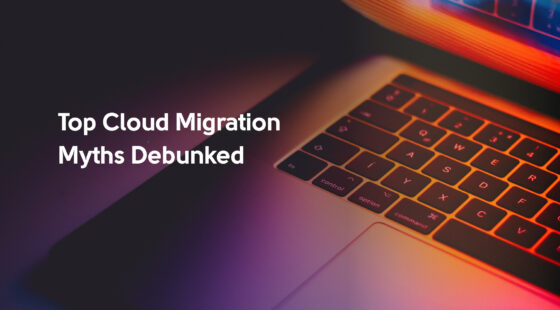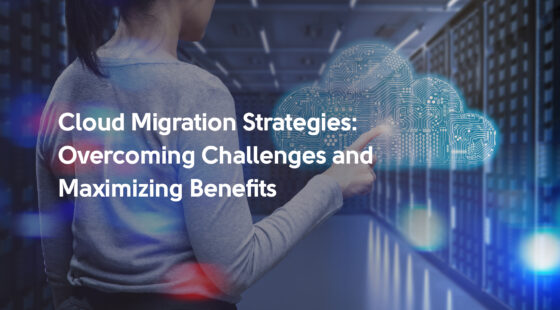Whether you’re modernizing legacy systems, building AI-driven apps, or scaling global operations, cloud computing stands at the center of it all. With three industry giants offering hundreds of services and unique strengths, one question remains: Which cloud platform is the best fit for your digital transformation? Find the best cloud platform comparison in our new article.
Cloud Platform Comparison and Adoption Trends
The cloud computing landscape has become the backbone of modern enterprise IT, with AWS, Azure, and Google Cloud at the forefront. Their combined dominance shapes innovation, efficiency, and global scalability:
Market Share Breakdown
| Cloud platform | Q3 2024 Share | Q1 2025 Share |
| AWS | 31–32% | 29% |
| Azure | 20–25% | 22% |
| Google Cloud | 11–13% | 12% |
AWS Overview
AWS launched in March 2006 as the pioneer of modern cloud computing and has since become the global leader in cloud infrastructure. Known for its virtually unmatched breadth of services, global reach, and scalability, AWS powers everything from startups to Fortune 500 companies. With over 200 fully featured services across computing, storage, AI, networking, and more, AWS is designed to meet virtually any digital transformation requirement.
AWS Strengths
AWS holds the largest market share (~31%), providing confidence through maturity and extensive global data centers. Some of its advantages include:
- Unmatched ecosystem: The AWS Marketplace offers thousands of third-party integrations, enabling flexibility and innovation.
- Advanced AI/ML offerings: Services like Amazon SageMaker and Bedrock give companies an edge in machine learning and generative AI.
- Proven scalability: Businesses like Netflix, Airbnb, and Zoom trust AWS to handle high-demand workloads at a global scale.
Potential Drawbacks
Complex pricing that grows exponentially as you scale and the pay-as-you-go model can lead to cost surprises without strong governance. Besides, there’s a steep learning curve: with 200+ services, where different services could provide similar functionality, AWS can feel overwhelming for teams just starting their cloud journey.
A hybrid approach instead of a native one is another concern. While AWS offers hybrid tools like Outposts, Azure often excels here due to its enterprise focus.
Best Fit Use Cases for AWS
- Global-scale workloads (e.g., streaming, e-commerce, SaaS platforms)
- AI/ML projects requiring advanced modeling tools
- Startups and enterprises needing extensive service variety
- Industries with high compliance demands (AWS supports 143 security standards and compliance certifications)
Microsoft Azure Overview
Launched in 2010, Microsoft Azure has become the second-largest cloud platform, holding a market share of approximately 22–25% as of 2024. Known for its deep integration with Microsoft products and strong hybrid cloud capabilities, Azure is a preferred choice for enterprises that rely heavily on Microsoft ecosystems like Windows Server, Office 365, and Active Directory.
Strengths of Azure
Azure Arc and Azure Stack are hybrid cloud leaders that enable seamless hybrid and multi-cloud deployments, making it ideal for organizations with both on-prem and cloud workloads. Tight integration with Microsoft tools simplifies migration for enterprises already using Microsoft solutions.
AI and analytics is an extra brownie point since Azure’s AI Studio and Cognitive Services empower businesses to build smart applications, while Azure Synapse Analytics provides powerful data capabilities.
Potential Drawbacks
Though competitive, Azure’s cost structure can be intricate, especially for multi-service workloads. Also, there’s steeper learning curve for non-Microsoft users since organizations outside of the Microsoft ecosystem may find the platform less intuitive. All in all, Azure still trails AWS in terms of the number of services and ecosystem depth.
Best Fit Use Cases for Azure
- Hybrid cloud environments where on-premises systems must coexist with the cloud.
- Enterprise workloads (finance, healthcare, and government sectors).
- AI-driven enterprise apps (using Azure Machine Learning and OpenAI integrations).
- Microsoft-centric organizations: Azure is a natural choice for companies already using tools like SharePoint, Dynamics 365, or Teams.
Google Cloud Platform (GCP) Overview
Launched in April 2008, Google Cloud Platform (GCP) is known for its AI-first approach, open-source leadership, and innovative data services. While GCP holds a smaller market share compared to AWS and Azure (around 11–12% as of 2024), its rapid growth is fueled by AI/ML, analytics, and cost-effective solutions.
Strengths of GCP
Google Cloud is a renowned AI & data analytics leader with tools like Vertex AI, TensorFlow, and BigQuery that make GCP the go-to platform for advanced analytics and machine learning.
Open-source innovation is another advantage: GCP pioneered Kubernetes and maintains strong contributions to open-source technologies.
In terms of cost efficiency, GCP often provides a lower TCO (total cost of ownership) with flexible pricing models and sustained-use discounts.
Finally, multi-cloud readiness is an extra point to consider: Google Anthos supports hybrid and multi-cloud workloads, simplifying complex deployments.
Potential Drawbacks
- Smaller enterprise adoption: While growing fast, GCP still trails AWS and Azure in enterprise-scale adoption.
- Fewer global data centers: Although expanding, its footprint is smaller compared to AWS and Azure.
- Learning curve for traditional enterprise teams: GCP’s developer-centric tools can be challenging for organizations with less technical depth.
Best Fit Use Cases for GCP
- AI and machine learning projects, from predictive modeling to generative AI.
- Data-heavy workloads like real-time analytics and IoT.
- Startups and developers seeking open-source-friendly ecosystems.
- Companies focused on innovation and cloud-native applications.
Pricing & Cost Management
All three cloud providers follow a pay-as-you-go pricing model, with options for reserved instances, spot pricing, and volume discounts to help organizations optimize costs. However, each platform approaches pricing transparency and cost-saving tools differently:
- AWS: Offers flexible pricing with on-demand, reserved, saving plans, and spot instances.
- Azure: Provides competitive pricing for Windows-based workloads. Azure Reserved VM Instances can save up to 80% when combined with Azure Hybrid Benefit (for existing Microsoft licenses).
- Google Cloud (GCP): Known for its sustained-use discounts (automatic discounts for workloads running long-term), often resulting in simpler, lower TCO for compute-heavy workloads.
Digital Transformation Criteria: Choosing the Right Cloud Platform
The “right” platform is scenario-dependent:
- AWS for global scalability
- Azure for enterprise/hybrid
- GCP for innovation and AI.
Many organizations use multi-cloud strategies to combine these strengths while mitigating vendor lock-in.
Now, in all honesty, selecting between AWS, Azure, and Google Cloud isn’t just about features or pricing. The best choice depends on how well the platform aligns with your digital transformation roadmap, including compliance, scalability, AI-readiness, and industry requirements.
| Criteria | AWS | Microsoft Azure | Google Cloud Platform |
| Compliance and security | - 98 security & compliance certifications (e.g., FedRAMP, HIPAA, GDPR) - Rich security services: Security Hub, GuardDuty, IAM, Inspector | - Strong built-in compliance for enterprise/government (e.g., ISO 27001, SOC 2, HIPAA) - Microsoft Defender for threat protection | - Default end-to-end encryption - Security model based on Google’s internal infrastructure - Suited for zero-trust architecture |
| Global reach and data centers | - 33 regions, 105 Availability Zones (as of August 2025) - Unmatched global presence | - 60+ regions - Excellent for regional compliance and hybrid setups | - Smaller but growing footprint - Competitive in North America and Europe |
| AI/ML and innovation readiness | - Leading tools: SageMaker, Bedrock - Supports generative AI projects | - Deep OpenAI integration (e.g., ChatGPT on Azure) - Enterprise-ready AI tools | - Strong in AI/ML: Vertex AI, TensorFlow - Ideal for innovation-focused orgs |
| Industry fit | - Best for e-commerce, fintech, SaaS, and streaming - Scalable, broad services | - Ideal for finance, healthcare, government - Strong Microsoft ecosystem integration | - Preferred by tech startups and data-heavy AI-driven industries |
| Multi-cloud and hybrid strategy | - Outposts and hybrid networking available - Improving, but trails Azure in native hybrid support | - Leads in hybrid with Arc and Stack | - Anthos enables seamless multi-cloud deployments |




![[Blog cover] Top signs your legacy system needs modernization](https://svitla.com/wp-content/uploads/2025/05/Blog-cover-Top-signs-your-legacy-system-needs-modernization-560x310.jpg)